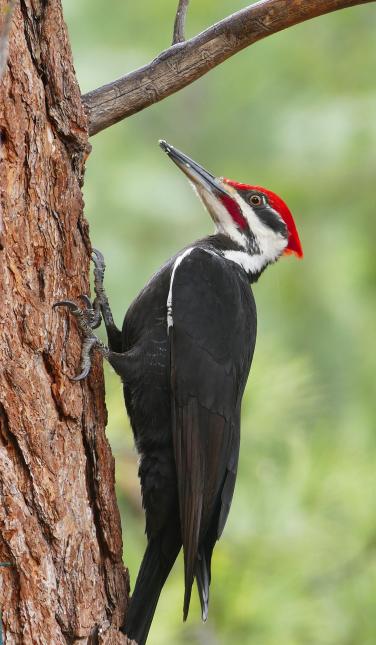Indigenous Woodpeckers in Florida: An Overview to Variety and Behaviors
Introducing the Secrets of Woodpeckers: Habits, Environment, and More
Woodpeckers, with their special actions and specialized adaptations, have lengthy fascinated scientists and nature lovers alike. These impressive birds possess a variety of appealing keys that shed light on their survival techniques, environment choices, and detailed communication methods. By discovering the secrets bordering woodpeckers' actions and environment choices, a deeper understanding of these avian wonders emerges, providing a look right into their remarkable globe. So, what makes these birds truly extraordinary, and exactly how do they browse their atmosphere with such accuracy and ability? Allow's check out the fascinating world of woodpeckers and unwind the enigmatic information that make them such appealing subjects of research study.
Woodpecker Habits Insights
In checking out woodpecker actions, a fascinating screen of specialized skills and adaptations arises, losing light on their exceptional environmental niche - Woodpeckers in Florida. Woodpeckers, known for their distinct drumming on trees, possess a variety of behavior qualities that add to their survival and success in their environment. One vital habits is their drumming, which serves numerous functions such as communication, developing area, attracting friends, and locating food resources. This rhythmic pecking also showcases their impressive stamina and endurance, as they can hammer away continuously at broadband without causing injury to themselves.
Furthermore, woodpeckers display an unique feeding habits identified by their ability to remove insects from tree bark using their specialized beaks. Their lengthy, barbed tongues aid in catching target, while their strong neck muscle mass give stability and precision throughout pecking activities. This feeding technique permits woodpeckers to access covert insect larvae and remove them with impressive efficiency.
Habitat Preferences and Option
What factors affect the environment choices and choice of woodpeckers? One vital aspect affecting woodpecker environment choice is the availability of suitable nesting sites. Woodpeckers typically prefer woodlands with a mix of fully grown trees that supply adequate chances for cavity excavation.
Additionally, woodpeckers reveal a choice for habitats with an abundant supply of food resources. They are largely insectivorous, eating beetles, ants, larvae, and other insects found in worn out timber or tree bark. Woodpeckers have a tendency to favor woody areas with a varied insect populace to meet their nutritional requirements.
Moreover, the visibility of dead or rotting trees is another vital aspect in woodpecker habitat option. These trees not only give food resources but likewise provide ideal substrate for dental caries excavation. Dead trees are necessary for the maintenance of healthy and balanced woodpecker populations, as they play an essential function in the woodpeckers' life process and environment dynamics.
Feeding Routines and Diet Structure
Woodpeckers demonstrate a specialized feeding habits concentrated on foraging for insects within various environments. In enhancement to insects, woodpeckers also take in tree sap, fruits, nuts, and seeds, including selection to their diet depending on the season and accessibility of food resources.
The foraging methods of woodpeckers are well-adapted to their arboreal way of life (Woodpeckers in Florida). Their capability to excavate wood not only offers them with food however likewise helps in creating nesting cavities and why not look here establishing territories. Woodpeckers play a critical function in preserving the health of forests by controlling insect populations and assisting in the decay of timber. Understanding their feeding routines and diet plan composition is essential for conservation initiatives intended at maintaining these special and valuable birds.
Drumming Sounds and Interaction
Using fast drumming audios on numerous surface areas, woodpeckers use an unique form of communication to signify area boundaries and bring in companions. This drumming behavior is not just a method of communication but also acts as a method for woodpeckers to develop their existence within a particular location. The intensity, rate, and pattern of the drumming can communicate important details to other woodpeckers in the location.
Woodpeckers utilize drumming audios to reveal their presence in an area and to advise off potential intruders. The loud and recurring nature of the drumming works as a clear signal to other woodpeckers that the area is currently declared. This aids in decreasing conflicts and decreasing physical conflicts in between individuals.

Survival Adaptations and Specialized Composition

Conclusion
To conclude, woodpeckers display special habits, such as drumming audios for interaction, and have specialized composition for survival in their picked environments. Their feeding behaviors and diet regimen composition better demonstrate their adaptability to numerous atmospheres. By recognizing these aspects of woodpeckers, scientists and preservationists can better secure and maintain these remarkable birds and their environments.